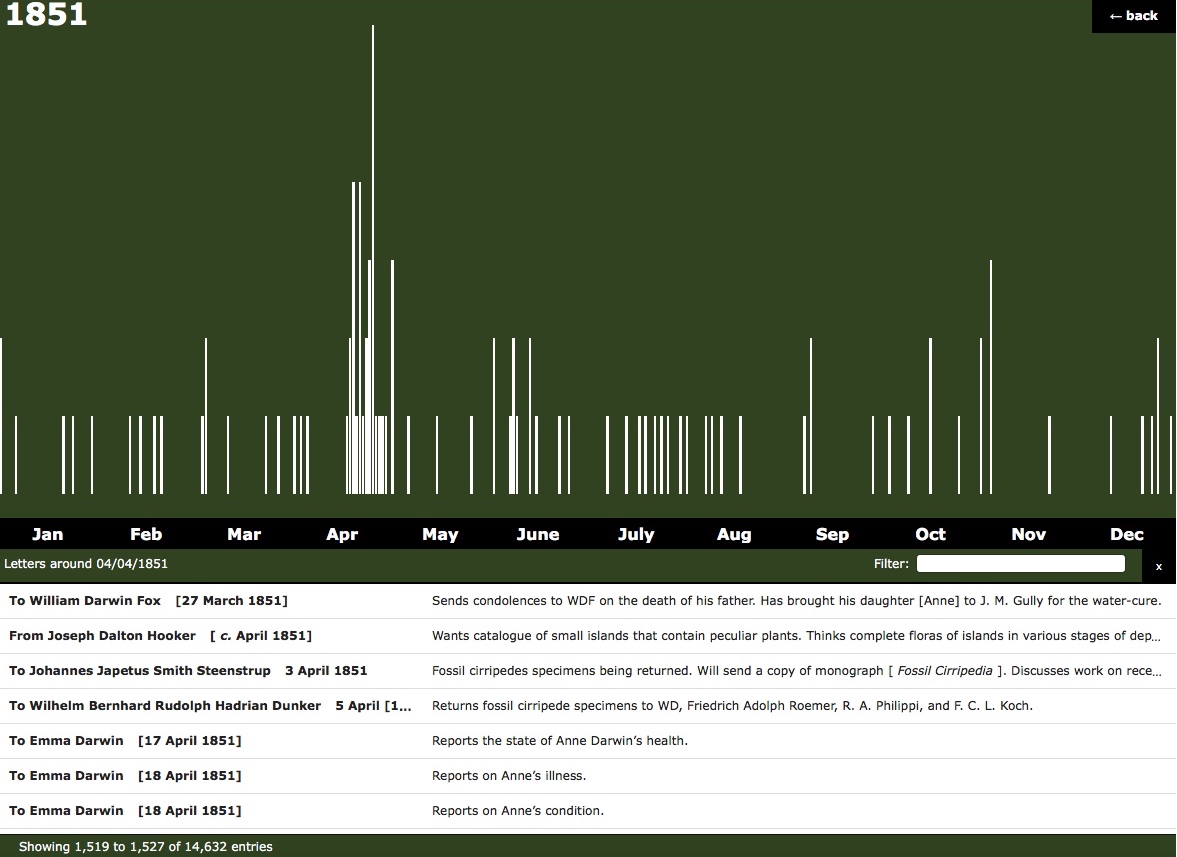The website has been updated with an interactive timeline (try it!) and enhanced secondary school resources for ages 11-14. What's more, the full texts of the letters for 1872 are now online for the first time, and a selection of Darwin's correspondence with women has been published in print. A fitting way to celebrate Darwin's birthday on 12 February.
Use the interactive timeline to see Darwin's correspondence year by year; zoom in to a year to reveal the letters sent and received on any particular day. Go to a letter to see other letters sent around that date. And go to the short biographies to see the letters sent and received by particular correspondents (examples: Thomas Henry Huxley, Mary Treat, Charles Lyell, Emma Darwin, Asa Gray). You can filter the timeline to limit the results to a name or keyword in the letter header or summary. Try the timeline.
You can also explore the new and improved schools resources for 11-14 years and find out:
What made Darwin angry on the Beagle voyage? Why did he feed roast beef to a plant? Who were the women who helped Darwin with his research? Why were his ideas seen as dangerous? Download the free to use activities; tried and tested in the classroom.
Over six hundred of Darwin's letters from 1872 are now published online for the first time, including those around the publication of the final, sixth edition of Origin of species, reviews of the recently published Descent of man, and the preparation of Darwin's next book Expression of the emotions in man and animals. Read Darwin's Life in Letters for 1872.
Darwin and women is a collection of letters exchanged with family, friends, scientific observers, and readers of Darwin's work, on topics ranging from religion to companion animals and observing plants, from marriage and children, to women's education. Watch a film to find out more about this new book.



